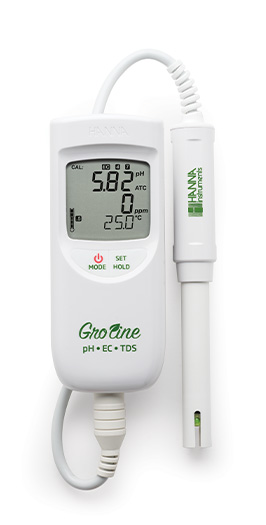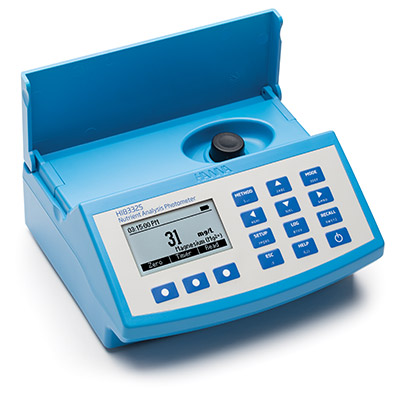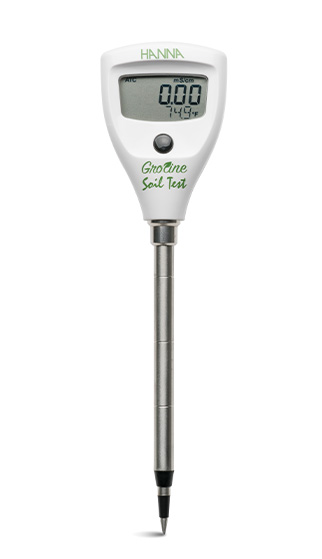Chrysanthemums are the queens of autumn and the decoration of every garden.
Chrysanthemums as flowers that decorate gardens until late autumn in Croatia and the surrounding area, most often have a link as flowers that are carried to the cemetery while in the rest of the world chrysanthemums do not have such a status.
Chrysanthemums such as cuttings and small-flowered pots decorate gardens, terraces and homes and delight us with their colors.
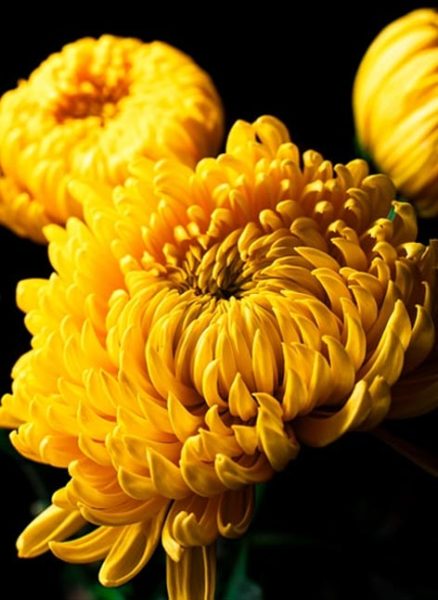
Chrysanthemums are perennials. The ones sold as potted plants are treated as annuals but after flowering along proper fertilization and pruning next year will delight us with colors.
After growing seedlings in the spring we come to the most critical part in late July, and that is transplanting to open or sheltered areas.
Therefore, when preparing the soil for transplanting and growing Chrysanthemums, care should be taken and everything should be prepared in the most ideal ratio from nutrients
to pH.
Chrysanthemums are stress queens for flower growers but they are also high income value plants.
Ideal soil pH reaction for chrysanthemums in the substrate (special mixtures)
and garden soil ranges pH 6 -7.2 so they are ideal for medium heavy
loamy soils with weakly acidic to alkaline reactions which on the continental
part has enough.
HI98168
Professional Soil pH Meter
The HI98168 is a rugged, waterproof, portable pH meter that allows for the direct measure of soil pH. This meter is supplied with a specialized pH electrode that has a rugged conical tip for insertion in soil.
Besides being supplied with a unique pH electrode made for soil analysis, the HI98168 has the Hanna’s unique CAL Check™ feature that alerts the user to potential problems during the calibration process. This is a very important since it is likely that the probe will be coated with soil. This coating can easily lead to errors in pH measurement. By comparing previous calibration data to the current calibration, the meter will inform the user, with display prompts, when the probe needs to be cleaned, replaced, or if the pH buffer might be contaminated. After calibration, the overall probe condition is displayed on screen as a percentage. The probe condition is affected by both the offset and slope characteristics of the pH electrode, both of which can be found in the GLP data including with the readings stored in the meter or transferred to a PC.
- Quick Connect DIN Connector
- USB Connection for Data Transfer
- Dedicated Help Button
- ±0.002 pH Accuracy
- Comes with all the necessary solutions and batteries- everything you need to get started measuring right away.
- Specialized electrode for spot checking the pH of soil and soil slurries.
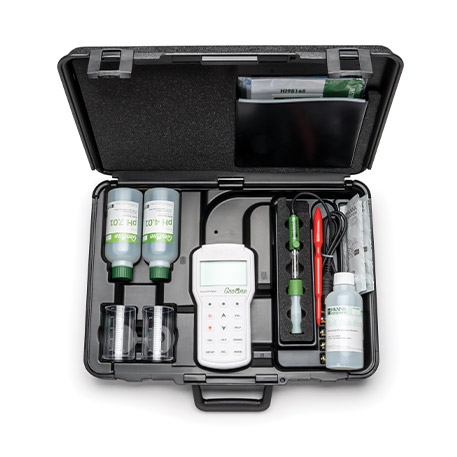
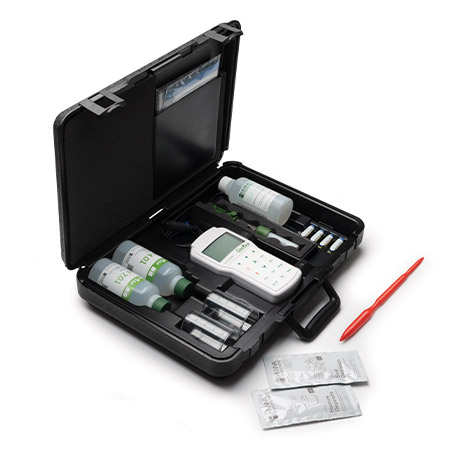
Fertirigation is recommended for control and successful growth.
With water soluble fertilizers at each irrigation cycle at a concentration of 200 ppm N complex NPK fertilizers.
HI9814
pH/EC/TDS/Temp meter
HI9814 is a durable, portable pH, conductivity, total dissolved solids and temperature meter for most measurements encountered in hydroponics, aquaponics or general agriculture applications. All operations and settings, are made through only two buttons and the housing is waterproof and rated for IP67 conditions. User-selectable features include selectable TDS factors of 0.5 and 0.7 as well as auto-off after 8 minutes or 60 minutes to prolong battery life.
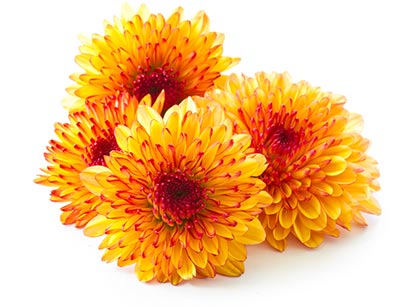
HI98318
EC/TDS Tester
The HI98318 is our latest pocket meter for measuring the EC/TDS of a hydroponic nutrient solution. This modern looking meter is only 0.7″ thick and extremely ergonomic, fitting comfortably in your hand. The HI98318 has a very large easy to read LCD display that shows both EC or TDS and temperature along with calibration, stability and low battery indicators. All operations are simplified to two buttons. One is for turning the meter on/off and the other for automatic one point calibration.
- Graphite Sensor for Reduced Polarization Effect
- Two-Button Operation
- Quick Calibration Mode using Hanna pH/EC Quick Cal Solution
Transplanting concentrations can be 200-300 ppm NPK fertilizer after planting (NPK fertilizer balanced 15-15-15 / 20-10-15 or specific for chrysanthemums).
Micro elements must always be added because we want all plants to have beautiful green leaves nicely formed as well flowers of beautiful colors. You only need to pay attention to your phosphorus feed because the excess causes elongation of the plants and this has no market value.
HI83325-02
Nutrient Analysis Photometer
HI83325 is a compact, multiparameter photometer for use in the environmental lab or in the field. The meter is one of the most advanced photometers available with a innovative optical design that utilizes a reference detector and focusing lens to eliminate errors from changes in the light source and imperfections in the glass cuvette. This meter has 9 different programmed methods measuring 8 key plant nutrient water quality parameters:
- Ammonia
- Nitrate
- Phosphate
- Potassium
- Sulfate
- Calcium
- Iron
- Magnesium
To save valuable laboratory benchtop space, the HI83325 doubles as a professional pH meter with its digital pH/temperature electrode input. Now one meter can be used for both photometric and pH measurements.
What should not be allowed is to leave the plant without water, especially in
the beginning of production and at transplantation .
Hanna Tip:
When measuring EC in soil & soilless medium, take measurements right next to the plants as well as further away. Moisture, nutrients, and pH can vary greatly across a planted area. This means a little more work, but you will appreciate being able to get results that better represent your planting area.
HI98331
Direct Soil EC Tester Soil Test™
The Soil Test™ Direct Soil EC Tester – HI98331 is a rugged and reliable pocket-sized tester that offers quick and accurate readings. The Soil Test™ Direct Soil EC Tester – HI98331 features a stainless steel penetration probe for direct measurement of conductivity in soils. With a compact size, single button operation, and automatic calibration, Soil Test is an excellent choice for taking direct conductivity measurements in soil.
In the case of chrysanthemums is also specific to add PPP fungicides in irrigation solution. PPP fungicides used are based on captan and systemic insecticides to prevent loss later from pests and diseases. If left dry(low EC) in the early stages of production will thus be reduced
branching of chrysanthemums and their growth. In the final stage of production
mild drying can be used to harden the plants and make them all uniform heights and uniform flowering therefore measuring EC directly in the soil assists growers in their decisions and planning.
Initially, the temperature inside the protected area must be 20 ° C – 25 ° C a daily maximum 25 ° C which puts manufacturers in great need of constant monitoring and night temperatures must not be below 18 ° C.
HI148
Temperature Datalogger

Quick to setup, simple to use, the HI148 is a datalogger that is ideal for monitoring and recording temperature in applications such as food processing, transportation, museums, and horticulture.
Choose between 4 models and store up to 16000 records!
- Thin and Rugged Design
- Multiple Sensor Options
- Programmable LCD Display
- PC Connectivity
- Customizable Program Settings
- Programmable high and low alarm limits with visual LED indicators
- Data Retrieval and Analysis
What the producers are targeting is the optimal number of formed flower buds
(luxmeter) and it takes enough light to (long day) plants develop vegetatively and initiate flowering (short day) s by dimming with brightness control.
Light is important
Chrysanthemums need a lot of light for growth and development.
Quality of light is very important in agriculture.Too little light (or luminous intensity) affects the quantity and quality of crop performance.
About 1.1 Klx for 12 hours per day are necessary simply to maintain plant quality for one year and at least 2.1 Klx for 12 hours per day are necessary for foliage plants to manifest any benefit from fertilization.
While lack of sufficient light results in poor plant growth, too much light can also be harmful. Shade plants cannot tolerate excessively high light levels. When a plant receives too much direct light, the leaves bleach or scald, sometimes dying. This often happens after moving a plant outdoors in direct light. Any changes in light intensity should be gradual.
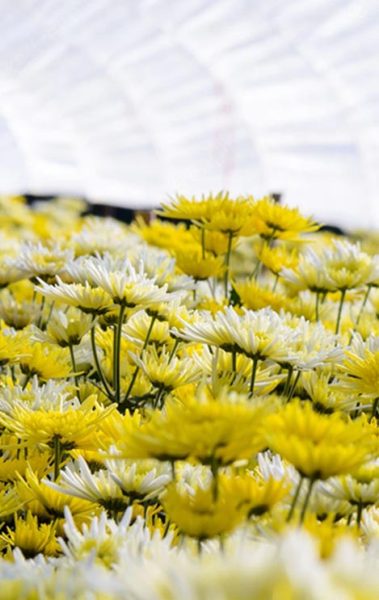
HI97500
Portable Lux Meter
HI97500 is a portable lux meter designed for simplicity of use in taking rapid light measurements.

Irrigation automatisation & control
In Chrysanthemum production it is essential to establish the frequency of watering so that the plant does not undergo root suffocation and through water stress. If the ratios of applied irrigation cycles vs. nutrients cycles are not carried correctly, huge losses in yield could occur.
With proper irrigation the quality and quantity of Chrysanthemums can be significantly enhanced.
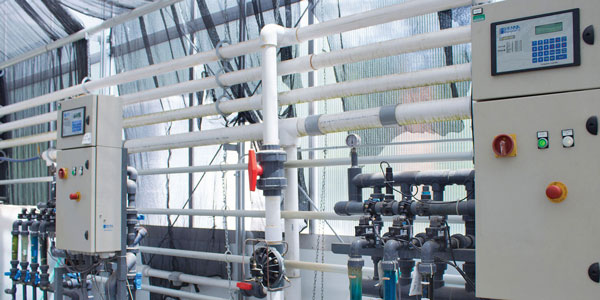
Correct irrigation
Is not a simple process: the quantity of water must be sufficient for Chrysanthemum plants, and if not, photosynthesis and overall growth is impeded. However, if the amount of water is more than required, plant growth may become excessive, producing a tall, softer and/or damaged product.
We design and manufacture a complete, ready-to-install, ferti-irrigation system for our customers.
At first, we collect the information and requests of the agronomist to create a system that corresponds to the actual needs of the customer. Afterward, we analyze the existing infrastructures to be able to interface our systems with the fixture already installed.
Finally, we produce the customized system and proceed with the installation, commissioning, and training of the personnel in charge.
Our ferti-irrigation systems have multiple applications:
- Outdoor farming
- Indoor (soil) farming
- Hydroponics
- Aeroponic

Our fertigation system integrates Hanna Instruments process equipment with high-quality industrial products to create two types of systems:
- Direct injection of nutrients
- Mixing tank
If a pH or a conductivity control problem arises, the program generates an alarm to inform the user. All operations of both control processes are stored in the memory.
The Fertigation controller performs all necessary operations, monitoring, control of irrigation, and fertilization processes. These operations are conducted continuously throughout the day, month and year.
To use and manage the system properly, all the necessary control values must be set (setup mode). During monitoring operations (consulting mode) the user can obtain information about how the system and irrigation process are functioning. Furthermore, the history of all operations for the current and previous days can be accessed.
Successful Grower Tips:
- Keep a log of your data
- Keep results on drippers in line with irrigation system controller values
- Calibrate portable pH & EC meters weekly
- Calibrate pH & EC sensors on the fertigation unit monthly
- Keep electrodes, fertigation system and fertilizer tanks clean to avoid deposits
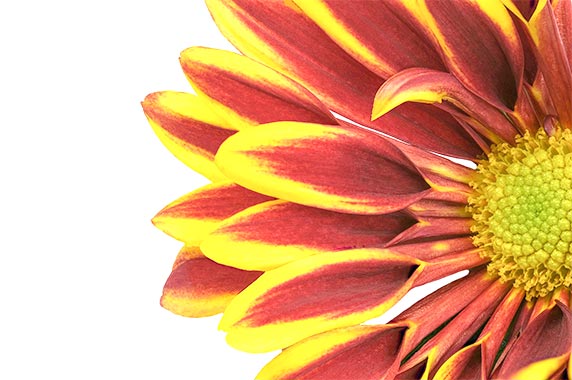
Author:
Saša Perica, struc.spec.ing.agr.
Saša Perica, struc.spec.ing.agr.


